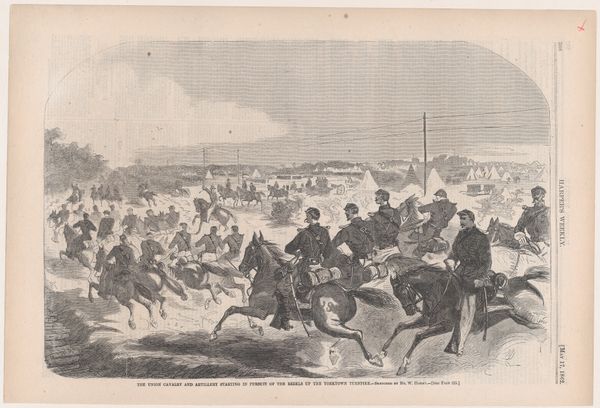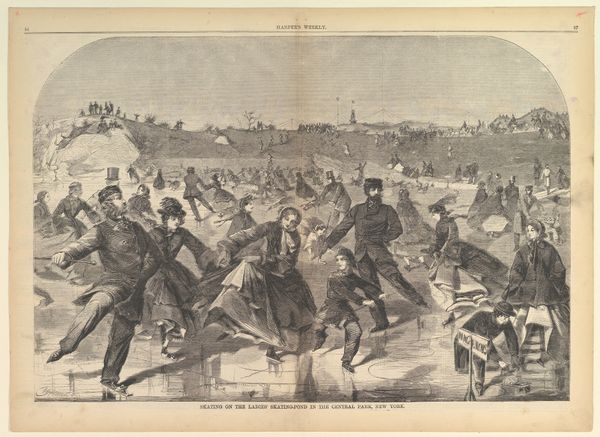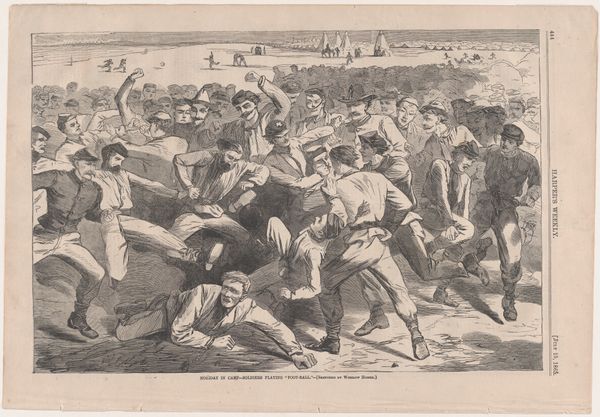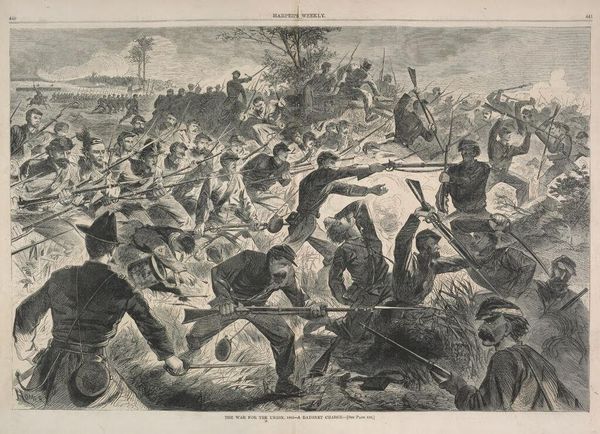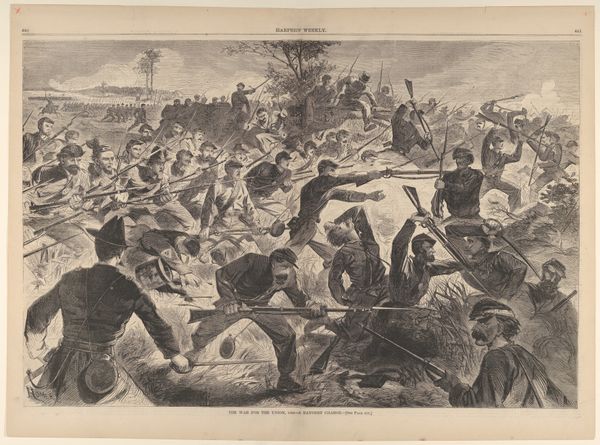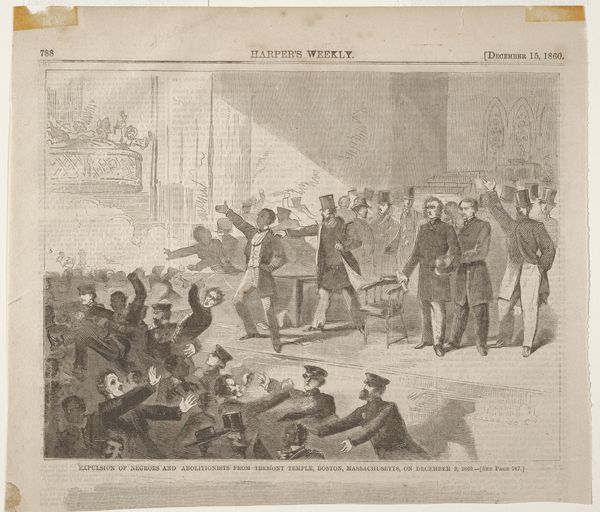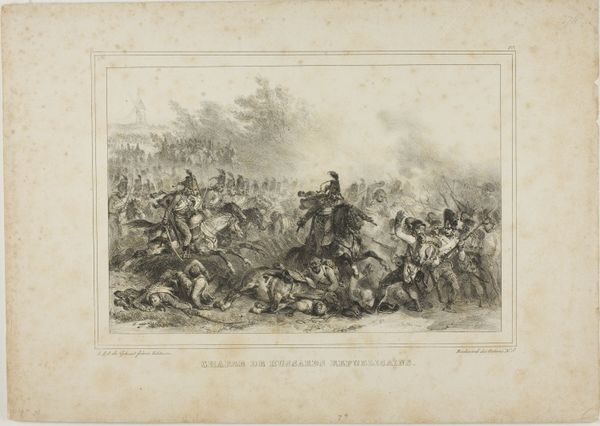
Charge of the First Massachusetts Regiment on a Rebel Rifle Pit Near Yorktown (from "Harper's Weekly," Vol. VI) 1862
0:00
0:00
drawing, print, engraving
#
drawing
# print
#
war
#
soldier
#
horse
#
men
#
history-painting
#
engraving
Dimensions: image: 9 1/4 x 13 3/4 in. (23.5 x 34.9 cm) sheet: 9 1/4 x 10 5/8 in. (23.5 x 27 cm)
Copyright: Public Domain
Editor: This is Winslow Homer's "Charge of the First Massachusetts Regiment on a Rebel Rifle Pit Near Yorktown," from 1862, made as an engraving. It depicts soldiers in motion, charging forward. It feels…chaotic and desperate, especially with the stark black and white contrast. How do you interpret this work in the context of its time? Curator: That "chaos," as you call it, speaks volumes about the realities of war often sanitized in grand historical paintings. What’s particularly compelling here is understanding the First Massachusetts Regiment itself. This was a regiment of primarily free Black men. Consider that the "charge" itself is not just a military action but a potent symbol of Black men fighting for their own liberation, against a system that sought to deny their very humanity. Editor: So, the image isn’t just about a battle, but about the racial dynamics of the Civil War? Curator: Exactly! Homer, as a visual reporter for *Harper's Weekly*, was documenting the war, but we must ask: what stories are being told, and whose perspectives are centered? Was he intentionally highlighting the role of Black soldiers, or was it simply a matter of record? Consider the potential audience of *Harper's Weekly* – mostly white Northerners – and what messages this image might have conveyed about Black participation in the Union cause. Editor: That shifts my understanding entirely. I was focused on the action, not on who was performing it. Curator: And that's often how dominant narratives work, isn’t it? To erase or marginalize the contributions of certain groups. Now, when you look at this “chaotic” scene, how does it feel different? Editor: It feels… purposeful. Empowered, even. Like their individual acts of bravery contributed to something larger than just a military engagement. Curator: Precisely. It highlights the importance of critically examining historical imagery and unearthing the narratives of those who have been historically marginalized. This print becomes more than just a war scene. Editor: I’ll definitely look at Homer's work—and other depictions of the Civil War—with fresh eyes now. Thanks.
Comments
No comments
Be the first to comment and join the conversation on the ultimate creative platform.

